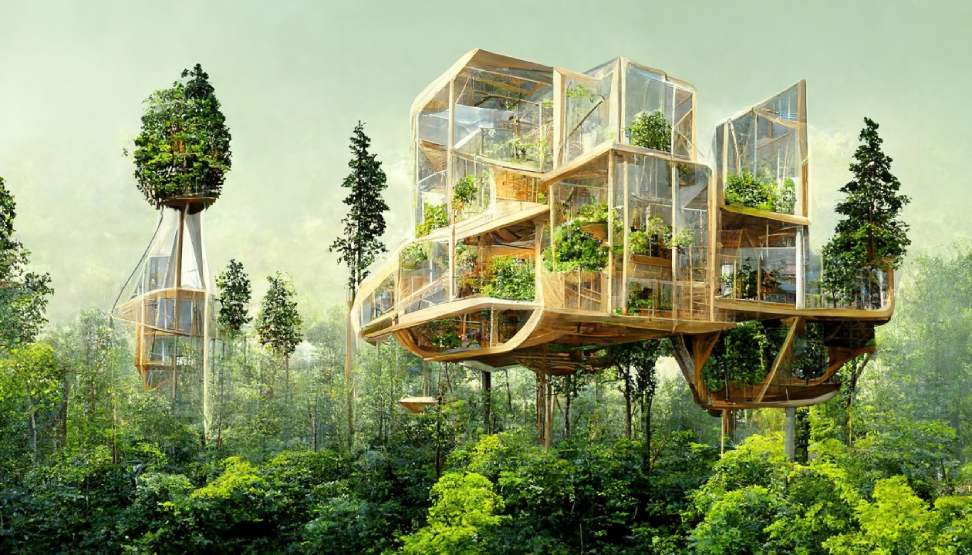Max66, Arsgroup777, ARS Group Exchange: Biophilic design is a design principle that aims to incorporate elements of nature into man-made spaces. The term “biophilic” comes from the Greek words “bios,” meaning life, and “philos,” meaning love, highlighting the idea of a love for life and living things. This design approach seeks to create environments that connect people to nature, promoting feelings of well-being and rejuvenation.
At its core, biophilic design is about mimicking natural patterns, shapes, and materials to enhance the overall experience of a space. By integrating elements such as natural light, vegetation, water features, and organic textures, designers can create spaces that resonate with our innate connection to the natural world. This not only results in aesthetically pleasing environments but also contributes to improved mental and physical health for the occupants.
Benefits of Biophilic Design in Architecture
Biophilic design in architecture has been shown to have numerous advantages for both individuals and the environment. By incorporating natural elements such as plants, natural light, and water features into the built environment, biophilic design can help reduce stress, improve cognitive function, and enhance overall well-being. Research has indicated that exposure to nature within architectural spaces can lead to increased productivity and creativity, as well as a greater sense of connection to the surroundings.
Furthermore, integrating biophilic design principles into architecture can result in energy savings and environmental benefits. Strategies like maximizing natural daylight, incorporating green roofs, and using natural ventilation systems can help reduce energy consumption and promote sustainability. By enhancing the relationship between people and nature within architectural spaces, biophilic design not only improves the quality of life for occupants but also contributes to a more eco-friendly built environment.
The Importance of Natural Elements in Architecture
Ars247, Wazeerexch, Peachexch: Natural elements play a crucial role in architecture, serving as a fundamental component in creating spaces that are not only visually appealing but also promote well-being. Integrating elements such as natural light, greenery, water features, and materials like wood and stone can evoke a sense of connection to the natural world within built environments. Architects utilize these elements to establish harmony between the man-made structures and the surrounding environment, fostering a sense of balance and tranquility.
By incorporating natural elements into architecture, designers have the opportunity to enhance the overall quality of spaces and create environments that support human health and productivity. Studies have shown that exposure to natural elements in architecture can reduce stress, improve cognitive function, and boost mood and creativity. Additionally, these elements can help regulate indoor temperatures, promote better air quality, and reduce energy consumption, contributing to sustainable and eco-friendly building practices.
� Natural elements such as natural light, greenery, water features, and materials like wood and stone create a sense of connection to the natural world in built environments.
� Architects use these elements to establish harmony between man-made structures and the surrounding environment.
� Incorporating natural elements into architecture can enhance the overall quality of spaces and support human health and productivity.
� Exposure to natural elements in architecture has been shown to reduce stress, improve cognitive function, boost mood and creativity.
� Natural elements can help regulate indoor temperatures, promote better air quality, and reduce energy consumption for sustainable building practices.
What is biophilic design?
Biophilic design is an architectural approach that incorporates elements of nature into the built environment to create a more harmonious and biologically supportive space.
How does biophilic design benefit architecture?
Biophilic design has been shown to improve mental well-being, increase productivity, reduce stress, and enhance overall comfort and satisfaction in built environments.
What are some examples of natural elements that can be incorporated into architecture?
Some examples of natural elements that can be incorporated into architecture include plants, natural light, water features, and natural materials such as wood and stone.
How can natural elements improve the sustainability of a building?
Natural elements such as green roofs, solar panels, and passive heating and cooling systems can help reduce energy consumption and lower the environmental impact of a building.
Can biophilic design be applied to all types of architecture?
Yes, biophilic design principles can be applied to all types of architecture, from residential homes to commercial buildings to public spaces.
Must Read :


